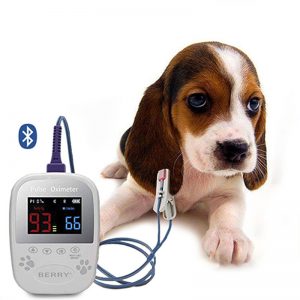
[Guide]Operational amplifier is one of the basic building blocks of linear design. In the classic mode, the operational amplifier consists of two input pins and an output pin. One input pin inverts the signal, and the other input pin maintains the phase of the signal. The standard symbol of the operational amplifier is shown in Figure 1. The power pin is omitted, which is obviously a necessary pin for device operation.
Figure 1: Standard symbols for operational amplifiers
The standard abbreviation of “op-amp” is “op-amp”. This name originated from the early days of amplifier design, when op-amps were used in analog computers. (Yes, the first generation of computers were analog, not digital.) When this When a basic amplifier is used in conjunction with several external components, it can perform various mathematical “operations”, such as addition, integration, etc. One of the main uses of analog computers was reflected in the Second World War, when they were used to draw ballistics Trajectory. For the history of operational amplifiers, see Reference 2.
Ideal voltage feedback (VFB) model
The classic model of an ideal voltage feedback (VFB) operational amplifier has the following characteristics:
1. Input impedance is infinite
2. Infinite bandwidth
3. Infinite voltage gain
4. Zero output impedance
5. Zero power consumption
Although these are not realistic, these ideal standards determine the quality of operational amplifiers.
This is the so-called voltage feedback (VFB) model. This type of operational amplifier includes almost all operational amplifiers with bandwidth below 10 MHz, and 90% of operational amplifiers with higher bandwidth. Current feedback (CFB) is another operational amplifier architecture, which we will discuss in another tutorial. Figure 2 summarizes the properties of an ideal voltage feedback operational amplifier.
Figure 2: Properties of an ideal voltage feedback operational amplifier
Basic working principle
The basic working principle of an ideal operational amplifier is very simple. First, we assume that part of the output signal is fed back to the inverting pin to establish the fixed gain of the amplifier. This is negative feedback. Any differential voltage through the input pins of the op amp will be multiplied by the open loop gain of the amplifier (for an ideal op amp, this value is infinite). If the amplitude of this differential voltage is positive on the inverting (–) pin and higher than the non-inverting (+) pin, the output will become negative. If the amplitude of the differential voltage is positive on the non-inverting (+) pin and higher than the inverting (–) pin, the output voltage will become positive. The infinite open loop gain of the amplifier will try to force the differential input voltage to zero. As long as the input and output are within the operating voltage range of the amplifier, the differential input voltage will remain at zero, and the output will be the product of the input voltage and the gain determined by the feedback network. Please note that the output reacts to differential mode voltage and not to common mode voltage.
Inverting and non-inverting configuration
There are two basic ways to configure an ideal voltage feedback operational amplifier as an amplifier. As shown in Figure 3 and Figure 4 respectively.
Figure 3 shows the inverted configuration. In this circuit, the output is inverted from the input. The signal gain of this circuit depends on the ratio of the resistors used, and the calculation formula is:
Figure 3: Op-amp stage in inverting mode
Figure 4 shows the in-phase configuration. In this circuit, the output is in phase with the input. The signal gain of this circuit also depends on the ratio of the resistors used, the calculation formula is:
Figure 4: Operational amplifier stage in non-inverting mode
Please note that when the circuit is configured for a minimum gain of 1(RG = ∞), because the output drives the voltage divider (gain setting network), the maximum available voltage at the inverting pin is the entire output voltage.
Also note that in both inverting and non-inverting configurations, the feedback is from the output pin to the inverting pin. This is negative feedback. For designers, this has many advantages. We will discuss this in detail.
Another thing to note is that the gain is based on the ratio of the resistors rather than their actual value. This means that designers can choose from a variety of values, as long as they follow certain practical restrictions.
However, if the value of the resistance is too low, the output pin of the operational amplifier needs to provide a large amount of current to work properly. This will lead to a substantial increase in the power consumption of the operational amplifier itself, resulting in a variety of shortcomings. Increased power consumption will make the chip self-heat, which may change the DC characteristics of the operational amplifier itself. In addition, the heat generation may eventually raise the junction temperature above 150°C, which is the upper limit commonly used in most semiconductors. The junction temperature is the temperature of the silicon wafer itself. On the other hand, if the resistance value is too high, it will cause noise and parasitic capacitance to increase, and as a result, it may also limit the bandwidth and may cause instability and oscillation.
From a practical point of view, resistors below 10 and above 1 M are difficult to find, especially when precision resistors are required.
Calculate the gain of an inverting op amp
Let’s discuss in detail the case of inverting operational amplifiers. As shown in Figure 5, the non-inverting pin is grounded. We assume that a bipolar (positive and negative) power supply is used. Since the op amp will force the differential voltage across the input pin to zero, the inverting input will also appear as a ground voltage. In fact, this node is usually called “virtual ground”.
Figure 5: Inverting amplifier gain
If voltage (VIN), it will pass through the resistance (RG) Generates current (I1), so:
Since the input impedance of an ideal op amp is infinite, no current will flow into the inverting input pin. Therefore, the same current (I1) must flow through the feedback resistor (RF). Since the amplifier will force the inverting pin to ground, the output pin will have a voltage (VOUT):
After some simple arithmetic operations, the conclusion (Equation 1) can be obtained, namely:
Calculate the gain of the non-inverting operational amplifier.
Figure 6: Non-inverting amplifier gain
Now, let’s take a closer look at the situation of the non-inverting amplifier. As shown in Figure 6, the input voltage is applied to the non-inverting pin.
The output voltage is driven by RFAnd RGConstitute the voltage divider. Inverting pin (VAThe voltage at the) terminal (located at the junction of the two resistors) is equal to:
The negative feedback behavior of the operational amplifier causes the differential voltage to become zero, so:
After simple arithmetic operations, we can get:
Same as Equation 2.
In the above discussion, we referred to the gain setting element as a resistor. In fact, they are impedances, not just resistors. In this way, we can build frequency-dependent amplifiers. For this issue, we will discuss in detail in a future tutorial.
references:
1. Hank Zumbahlen, Basic Linear Circuit Design Handbook, Elsevier-Newnes, 2008, ISBN-10: 0750687037, ISBN-13: 978-
0750687034. Chapter 1
2. Walter G. Jung, Op Amp Applications, Analog Devices, 2002, ISBN 0-916550-26-5, Also available as Op Amp Applications Handbook, Elsevier/Newnes, 2005, ISBN 0-7506-7844-5. Chapter 1 .
The Links: PM75RSA060 NL12880BC20-13ND


















